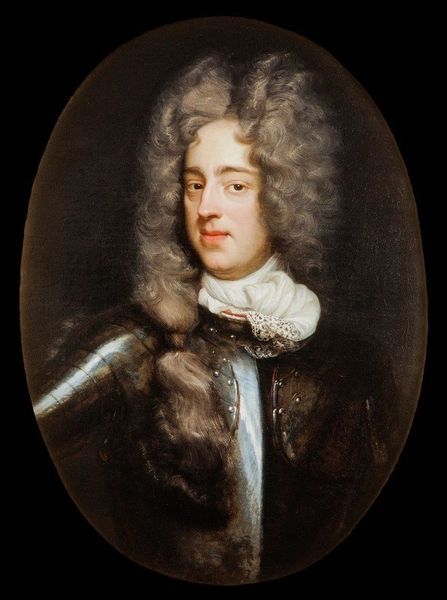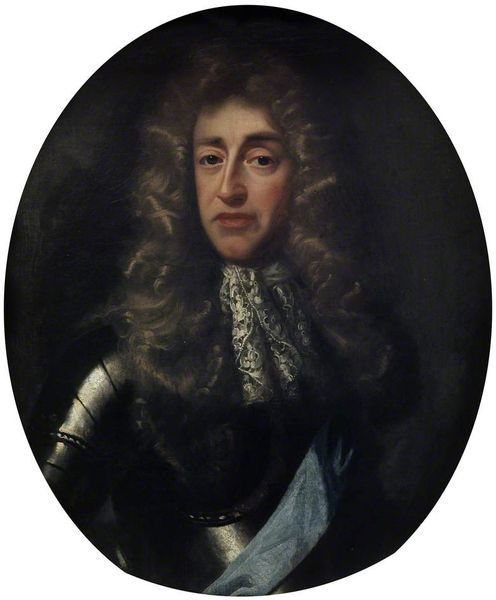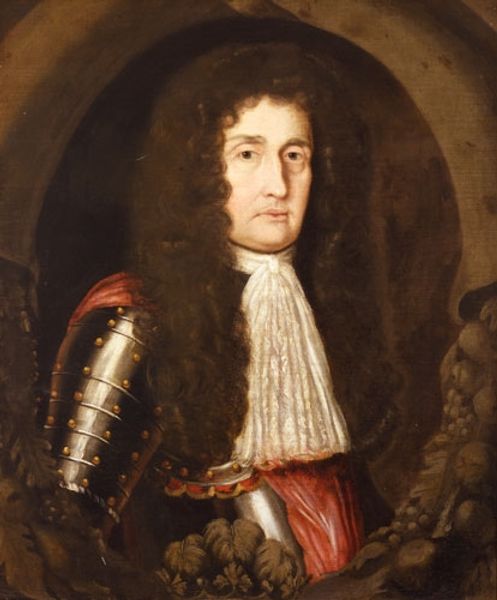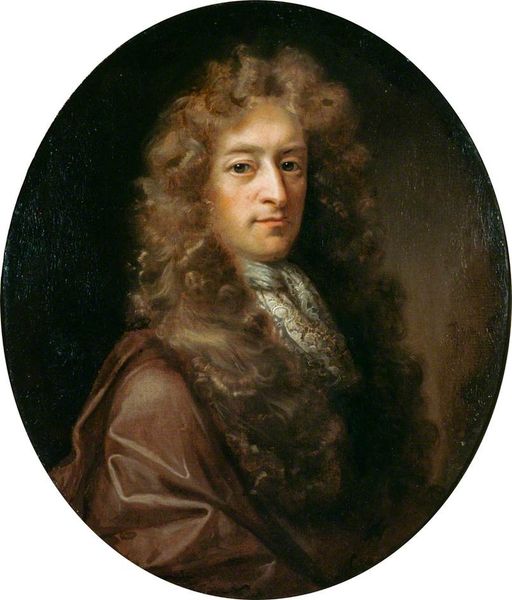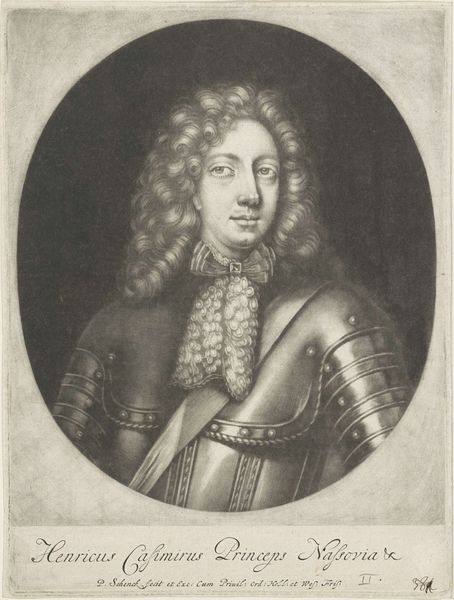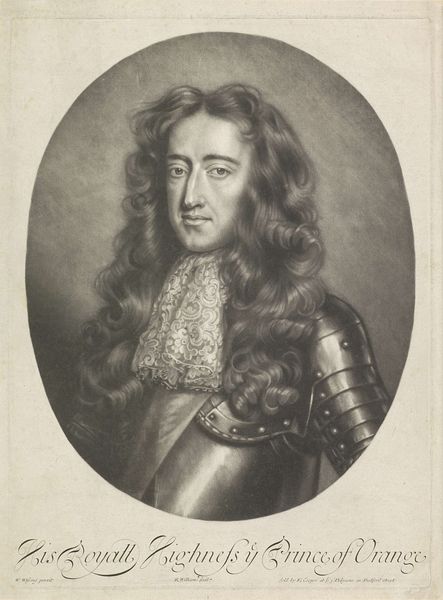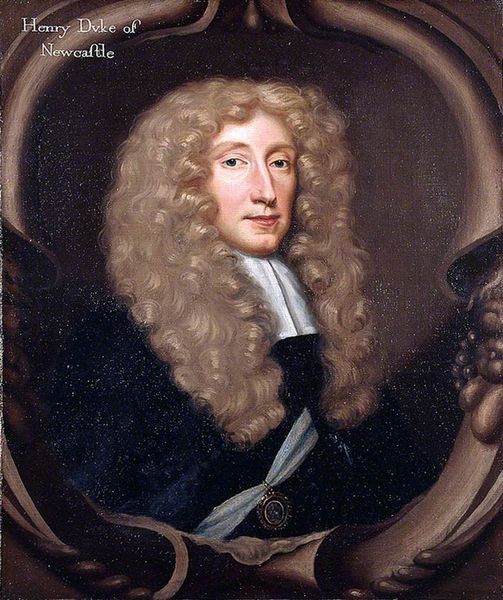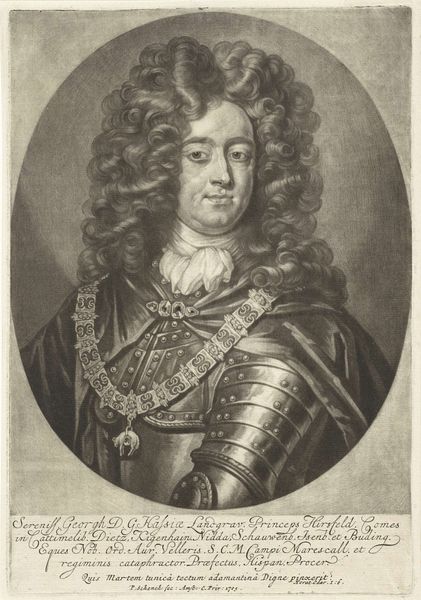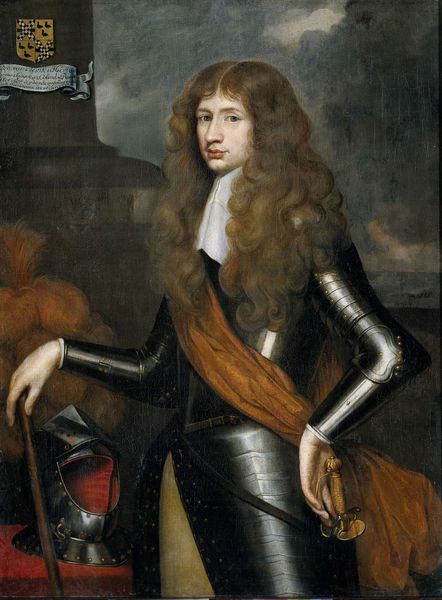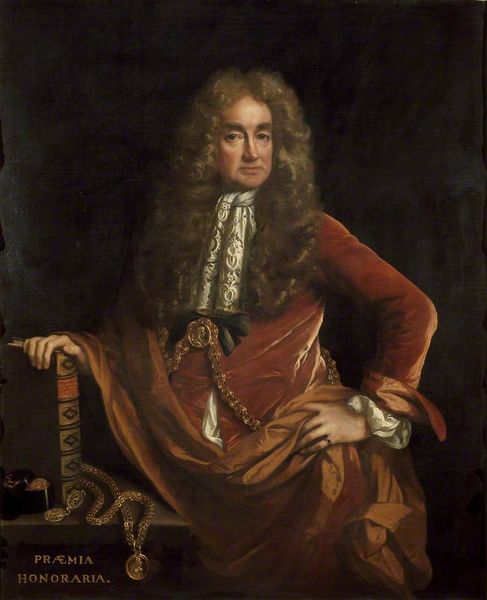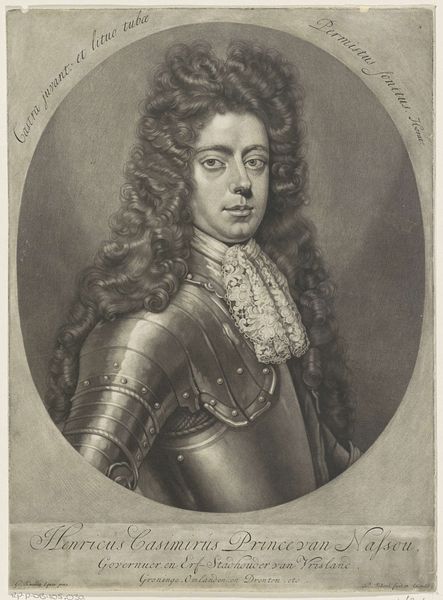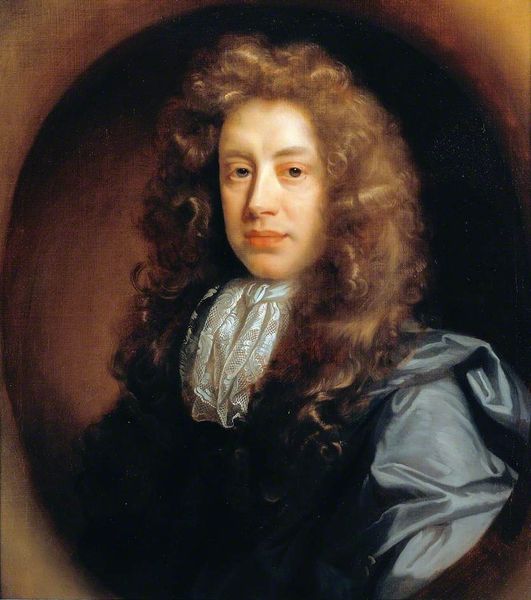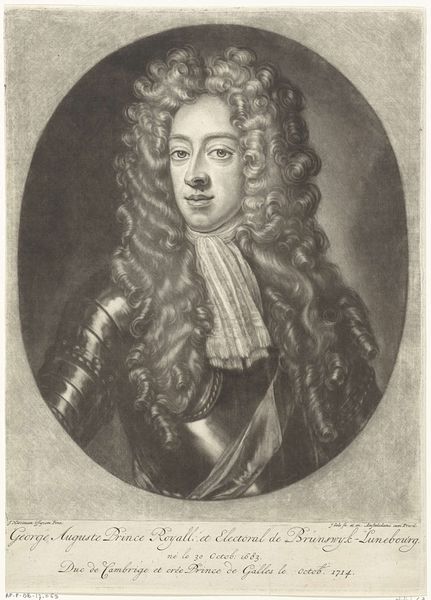
painting, oil-paint
#
portrait
#
baroque
#
painting
#
oil-paint
#
male portrait
#
history-painting
Copyright: Public domain
John Riley painted this portrait of the Duke of York in England sometime before 1691. This painting is an exercise in the construction of royal authority through visual cues. The Duke’s armor, lace collar, and flowing hair are symbols of power, wealth, and social status. Riley was one of several artists who rose to prominence as portraitists in England following the Restoration. These artists helped to redefine British painting, establishing new standards for portraiture that reflected the values and aspirations of the ruling classes. The portraitist's rise was tied to the importance of individual likeness, which became a marker of social identity and power. Through portraits like these, the monarchy shored up its position and signaled a return to traditional hierarchies following a tumultuous period of civil war. To understand the full significance of this work, historians will need to analyze the social conditions and institutional frameworks that shaped artistic production in the late 17th century. This means looking at how the art market functioned, the patronage system, and the role of the Royal Academy in shaping artistic taste.
Comments
No comments
Be the first to comment and join the conversation on the ultimate creative platform.
